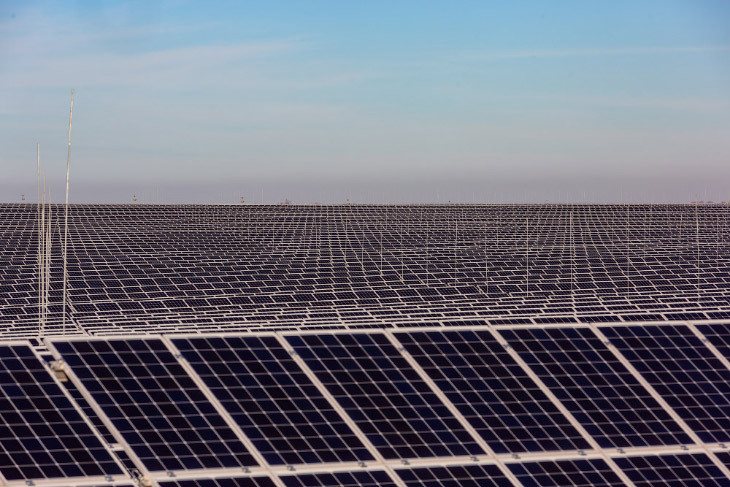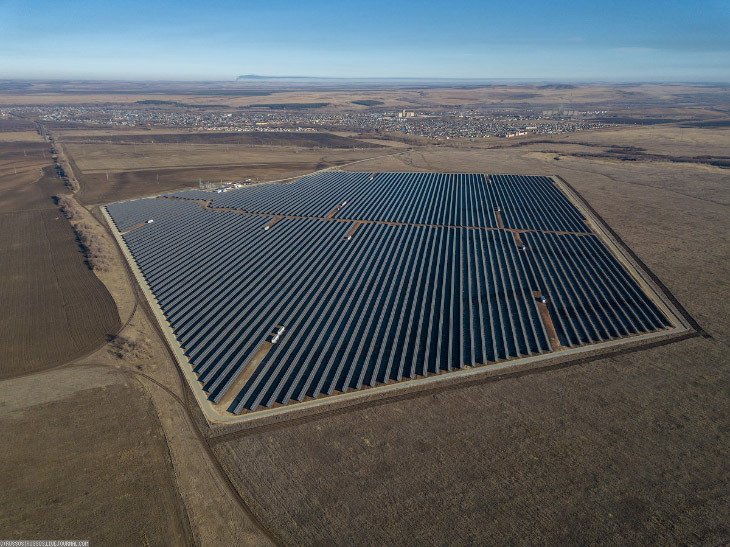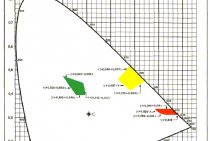Energy-saving vacuum double-glazed windows
Designed for sealing solar photovoltaic cells in the manufacture of solar modules and creating heat-saving transparent screens in the structures of buildings and greenhouses in the form of various glass coverings (windows, loggias, winter gardens, greenhouses, etc.)
The use of vacuum brazed double-glazed windows can largely solve the problems of energy saving.
Standard double-glazed windows consist of two or three sheets of glass glued together using a special frame. Such double-glazed windows are filled with an inert gas and equipped with moisture absorbers to prevent fogging and freezing of the glass.
VIESKh together with electronic industry enterprises have developed fundamentally new vacuum insulating glass units with unique properties. As a result, the service life, determined by the tightness retention resource, is 40–50 years.
The air (or inert gas) in the space between the panes was replaced by vacuum, which improved the heat-insulating and noise-absorbing properties. The table shows the heat-insulating properties of vacuum double-glazed windows. With a special coating on the glass, the heat transfer resistance can be increased by 10 times compared to single glazing.
Heat transfer resistance of transparent enclosures for buildings, greenhouses and solar installations
|
Name |
Thickness, mm |
Resistance |
|
One sheet of glass |
6 |
0,17 |
|
Two sheets of glass with a gap of 16 mm |
30 |
0,37 |
|
Vacuum insulating glass |
6 |
0,44 |
|
Vacuum insulating glass |
6 |
0,85 |
|
Vacuum insulating glass |
6 |
1,2 |
|
Double glazing with special coating on two panes |
12 |
2,0 |
|
Brick wall in 2.5 bricks |
64 |
1,2 |
High durability and excellent heat-insulating properties are obtained with a vacuum gap thickness of 40 µm and a double-glazed window thickness of 4–5 mm. If a residential building has double window frames with a glass thickness of 5 mm, then when replacing glass with double-glazed windows with a thickness of 5 mm, the same window frames are used. The heat-insulating properties of the window will improve by 5–10 times and will be the same as those of a brick wall 0.5–1 m thick. The minimum cost of a double-glazed window with a thickness of 5 mm is 1000 rubles/m2.
During the construction of a greenhouse or a winter garden from vacuum insulating glass units, energy costs for heating will be reduced by 90%. Solar installations with vacuum double-glazed windows (see figure) will heat water not up to 60 ° C, but up to 90 ° C, i.e. they are moving from hot water installations into the category of building heating installations. New technologies give space for the imagination of architects and builders. Imagine an ordinary warm house with 1 m thick brick walls and an equally warm house with 10 mm thick walls made of vacuum double-glazed windows.
The design of double-glazed windows is protected by utility model certificates and two patents for inventions.
Manufacturing technology has know-how.
On the brink of payback
Despite the environmental benefits of wind and solar power plants, the regions of the Russian Federation are not yet ready to switch completely to this type of energy. Limiting factors include high construction costs and low output power. In addition, according to some experts, such projects have a long payback period.
In particular, it is possible to return the costs of building wind farms after at least 8 years, Igor Sorokin, Minister of Industry and Energy of the Rostov Region, says to TASS. He noted that the Rostov region "has vast territories and good wind potential." The first wind farms with a capacity of 300 MW will appear here in 2019.“The launch of wind farms will increase the reliability of power supply to consumers in the region, the volume of electricity generation and the share of energy based on renewable energy sources and distributed electricity from the total capacity of energy consumed in the Rostov region up to 20% by 2022,” Sorokin said.
As the head of the Murmansk region Andrey Chibis noted earlier, the construction of a wind farm in the region will increase the share of environmentally friendly energy sources and will have a positive impact on the development of infrastructure in the Kola region. However, it will not take a significant share in the volume of energy consumption. In comparison, the Kola NPP, which accounts for 60% of the region's energy generation, has an installed capacity nearly 10 times higher and its output is almost 15 times greater than the wind farm's planned output.
In the Murmansk region, a wind farm is being created on the coast of the Barents Sea, not far from the village of Teriberka. Commissioning is scheduled for December 2021. According to the regional authorities, its capacity will be 201 MW, wind power plants will be able to produce 750 GW / h during the year, which will reduce carbon dioxide emissions into the atmosphere.
According to the Ministry of Fuel and Energy Complex and Housing and Public Utilities of the Arkhangelsk Region, the coast of the White Sea is recognized as the most promising site for the construction of wind farms. However, to launch such a facility requires a "high one-time cost". According to preliminary estimates, it may take 80 million rubles to modernize a diesel power plant located on the shores of the White Sea and "teach" it to work on wind or solar energy.
“In the absence of transport infrastructure with remote settlements, the cost of projects increases significantly, the introduction of renewable energy sources becomes on the verge of economic inexpediency. In the context of the territorial remoteness of promising places for the introduction of renewable energy sources, the high cost of implementation and the long payback period of the project, the issue of finding an investor is difficult,” the ministry noted.
The largest solar thermal power plants on Earth
| Power MW | Name | The country | Location | Coordinates | A type | Note |
|---|---|---|---|---|---|---|
| 392 | STES Aiwonpa | San Bernardino, California | tower | Put into operation on February 13, 2014 | ||
| 354 | Mojave Desert, California | parabolic-cylindrical concentrator | SES consists of 9 queues | |||
| 280 | Barstow, California | parabolic-cylindrical concentrator | Construction completed in December 2014 | |||
| 280 | Arizona | parabolic-cylindrical concentrator | Construction completed in October 2013 | |||
| 250 | Blythe, California | parabolic-cylindrical concentrator | In operation since April 24, 2014 | |||
| 200 | Solaben Solar Power Station | Logrosan, Spain | parabolic-cylindrical concentrator | 3rd stage completed in June 20122nd stage completed in October 20121st and 6th stages completed in September 2013 | ||
| 160 | SES Ouarzazate | Morocco | parabolic-cylindrical concentrator | with three vaults1st stage completed in 2016 | ||
| 150 | Sanlucar la Mayor, Spain | parabolic-cylindrical concentrator | 1st and 3rd stages completed in May 2010 4th stage completed in August 2010 | |||
| 150 | Guadix, Spain | parabolic-cylindrical concentrator | Construction certified: Andasol 1 (2008), Andasol 2 (2009), Andasol 3 (2011). Each has a heat reservoir designed for 7.5 hours of operation. | |||
| 150 | Torre de Miguel Sesmero, Spain | parabolic-cylindrical concentrator | Construction completed: Extresol 1 and 2 (2010), Extresol 3 (2012). Each has a thermal storage rated for 7.5 hours of operation | |||
| 110 | Crescent Dunes | Nye, Nevada | tower | in operation since September 2015 | ||
| 100 | South Africa | parabolic-cylindrical concentrator | with storage for 2.5 hours | |||
| Power MW | Name | The country | Location | Coordinates | A type | Note |
Energy of the Sun and Earth
In addition to using wind, several regions are exploring other alternative options: for example, in Kamchatka, a regional program is being implemented to transfer energy to non-traditional energy sources and local fuels. This was reported to TASS by the Minister of Housing, Communal Services and Energy of the Kamchatka Territory Oleg Kukil. As part of this program, two geothermal power plants were installed at the Mutnovsky steam hydrothermal field (in the vicinity of Mutnovsky volcano with the most powerful thermal water and steam outlets on the Earth's surface in Kamchatka), and four hydroelectric power stations were installed in the Ust-Bolsheretsky and Bystrinsky districts.
In the Republic of Adygea, solar energy is being developed. Here, by the end of this year, Renewable Energy Sources, together with Hevel Group of Companies, will build the first two solar power plants (SPPs) with a total capacity of 8.9 MW, investments in facilities will amount to 960 million rubles. A power plant based on solar modules is already operating in the Volgograd region. As TASS specified in the regional committee of housing and communal services and the fuel and energy complex, this is the Krasnoarmeyskaya SPP with a capacity of 10 MW.
In the Krasnodar Territory, in Anapa, more than 100 power generating units have been introduced into the infrastructure of the ERA technopolis of the Russian Defense Ministry, the press service of the innovation center told TASS. According to the interlocutor of the agency, one of the types of generators is benches equipped with solar batteries, the energy of which is enough to charge gadgets via USB connectors and power the LED backlight.
According to experts, solar energy in Russia has a long history of research and development since the times of the USSR. In addition, solar power plants are much cheaper to build and maintain compared to wind farms. “Wind farms require regular maintenance – lubrication of the blades. SPPs practically do not require special maintenance,” added Liliana Proskuryakova, Director of the Institute for Statistical Research and Economics of Knowledge at the National Research University Higher School of Economics.
The use of solar energy in chemical production
Solar energy can be used in various chemical processes. For instance:
The Israeli Weizmann Institute of Science in 2005 tested the technology for obtaining non-oxidized zinc in a solar tower. Zinc oxide in the presence of charcoal was heated by mirrors to a temperature of 1200 °C at the top of the solar tower. The process resulted in pure zinc. The zinc can then be hermetically packaged and transported to power generation sites. In place, zinc is placed in water, and as a result of a chemical reaction, hydrogen and zinc oxide are obtained. Zinc oxide can be put into the solar tower again and pure zinc is obtained. The technology has been tested in the solar tower of the Canadian Institute for the Energies and Applied Research.
The Swiss company Clean Hydrogen Producers (CHP) has developed a technology for the production of hydrogen from water using parabolic solar concentrators. The area of the installation mirrors is 93 m². At the focus of the concentrator, the temperature reaches 2200°C. Water begins to separate into hydrogen and oxygen at temperatures above 1700 °C. During a daylight hours of 6.5 hours (6.5 kWh / sq.m.), the CHP unit can split 94.9 liters of water into hydrogen and oxygen. Hydrogen production will be 3800 kg per year (about 10.4 kg per day).
Hydrogen can be used to generate electricity, or as a fuel for transportation.
Development of solar energy solar energy in Russia
Solar energy (solar energy)
In the field of solar energy, photovoltaic installations and power plants with direct conversion of solar radiation into electricity using solar photovoltaic cells made of mono- or polycrystalline or amorphous silicon are recognized as the most promising.
Photoconversion allows you to get electricity in diffused sunlight, create installations and power plants of various capacities, change their power by adding or removing modules.Such installations are characterized by low energy consumption for their own needs, are easily automated, safe in operation, reliable and maintainable.
The price of electricity for solar photovoltaic installations for the period 1985 ... 2000 decreased by 5 times - from 100 to 20 cents per 1 kWh (however, it remains high compared to installations with other renewable energy sources).
In the PLO "Astrophysics" in the 90s. were manufactured and tested in Stavropolenergo (Kislovodsk) autonomous solar power plants and block modular power plants with a capacity of 2.5 and 5 kW based on parabolic concentrators with metal mirrors with a diameter of 5 and 7 m and various converters (Stirling engine, thermionic converters, etc.) equipped with automatic solar tracking systems. In 1992 at the Rostov Institute "Teploelektroproekt" a feasibility study was developed for the construction of a solar experimental power plant (SPP) with a capacity of 1.5 MW in Kislovodsk.
Modern solar collectors, the production of which in Russia in 2000. 10 ... 20 thousand m2 per year are used for autonomous heat supply of the southern regions of Russia - in the Krasnodar and Stavropol Territories, the Republic of Dagestan, in the Rostov Region. It is promising to create solar collector heating systems for individual consumers, since even in central Russia 1 m2 of a solar collector saves 100 ... 150 kg tce. in year. In addition, solar installations for heat supply and hot water supply can be created on the territory of any boiler houses operating according to an open scheme, provided there is free space for solar collectors. The power of such solar attachments can be 5 ... 30% of the power of boiler houses.
Other related articles:
- Renewable Energy Sources (RES)
- Types and classification of RES
- Renewable energy resources in the world and their prospects
use - Renewable energy resources of Russia and their prospects
use - Comparative technical and economic indicators for power plants in traditional design and with the use of RES
- Factors stimulating the use of renewable energy
- Status and prospects for the use of renewable energy in the world and Russia
- Principles and technological features of NRES power plants
- Status and prospects for the use of renewable energy sources by main types
- Status and prospects for the development of non-traditional energy in Russia
- Status and prospects for the development of geothermal energy in Russia
- State and prospects for the development of wind energy in Russia
- Status and prospects for the development of small hydropower in Russia
- Development of tidal power plants in Russia
- Development of solar energy (solar energy) in Russia
- Status and development prospects of heat pumps in Russia
- Using the temperature difference between the lower layers of water and air
- Autonomous micro thermal power plants with an external combustion heat engine
- Biomass use
Specifications of mobile photovoltaic station
1. Electrical parameters*
|
Parameter |
Units |
Execution |
||
|
MFS12 |
MFS24 |
MFS48 |
||
|
Rated power |
Tue |
150-200** |
||
|
Rated voltage |
V |
16 |
32 |
64 |
|
Open circuit voltage |
V |
20 |
40 |
80 |
* - Electrical parameters are indicated for standard measurement conditions.
** — The range of rated powers is indicated depending on the efficiency of the used solar cells.
2. Geometric data of mobile photovoltaic station, mm
|
1 |
Maximum MFS Height |
2100 |
|
2 |
Frame dimensions |
1690x1620x30 |
|
In working position |
1480x345x4 |
|
|
In transport position |
360x345x18 |
|
|
3. |
Angle range |
40° — 75° |
|
4. |
Weight depending on |
12-19 |
|
5. |
Average duration |
30 |
|
6. |
MFS is efficient in a moderately cold climate |
at a temperature not lower than minus 30 °C. |
|
7. |
Service life, years |
at least 7. |
The largest photovoltaic power plants on Earth
[clarify]| Peak power, MW | Location | Description | MWh / year |
|---|---|---|---|
| California, USA | 9,000,000 solar modules | ||
| Mojave Desert, California, USA | |||
| California, USA | >1,700,000 solar modules | ||
| Agua Caliente, Arizona, USA | 5,200,000 solar modules | 626 219 | |
| San Luis Obispo, California, USA | |||
| 213 | Charanka, Gujarat, India | A complex of 17 separate power plants, the largest of which has a capacity of 25 MW. | |
| Imperial County, California, USA | >3,000,000 solar modules The most powerful station in the world, using technology to orient the modules to the Sun during the day. | ||
| 200 | Golmud, China | 317 200 | |
| Imperial County, California, USA | |||
| Imperial County, California, USA | |||
| Schipkau, Germany | |||
| Clark County, Nevada, USA | |||
| Maricopa County, Arizona, USA | 800,000 solar modules | 413 611 | |
| Neuhardenberg, Germany | 600,000 solar modules | ||
| Kern County, California, USA | |||
| Imperial County, California, USA | 2,300,000 solar modules | ||
| Imperial County, California, USA | 2,000,000 solar modules | ||
| Maricopa County, Arizona, USA | > 600,000 solar modules | ||
| 105,56 | Perovo, Crimea | 455,532 solar modules | 132 500 |
| Atacama Desert, Chile | > 310,000 solar modules | ||
| 97 | Sarnia, Canada | >1,000,000 solar modules | 120 000 |
| 84,7 | Eberswalde, Germany | 317,880 solar modules | 82 000 |
| 84,2 | Montalto di Castro, Italy | ||
| 82,65 | Okhotnikovo, Crimea | 355,902 solar modules | 100 000 |
| 80,7 | Finsterwalde, Germany | ||
| 73 | Lopburi, Thailand | 540,000 solar modules | 105 512 |
| 69,7 | Nikolaevka, Crimea | 290,048 solar modules | |
| 55 | Rechitsa, Belarus | almost 218 thousand solar modules | |
| 54,8 | Kiliya, Ukraine | 227,744 solar modules | |
| 49,97 | SES "Burnoye" from Nurlykent, Kazakhstan | 192 192 solar modules | 74000 |
| 46,4 | Amareleza, Portugal | >262,000 solar modules | |
| Dolinovka, Ukraine | 182,380 solar modules | 54 399 | |
| Starokazache, Ukraine | 185,952 solar modules | ||
| 34 | Arnedo, Spain | 172,000 solar modules | 49 936 |
| 33 | Kurban, France | 145,000 solar modules | 43 500 |
| 31,55 | Mityaevo, Crimea | 134,288 solar modules | 40 000 |
| 18,48 | Sobol, Belarus | 84,164 solar modules | |
| 11 | Serpa, Portugal | 52,000 solar modules | |
| 10,1 | Irlyava, Ukraine | 11 000 | |
| Ralivka, Ukraine | 10,000 solar modules | 8 820 | |
| 9,8 | Lazurne, Ukraine | 40,000 solar modules | 10 934 |
| 7,5 | Rodnikovo, Crimea | 30,704 solar modules | 9 683 |
| Batagay, Yakutia | 3,360 solar modules
the largest SPP beyond the Arctic Circle |
||
| Peak power, MW | Location | Description | MWh / year |
| Year(s) | Station name | The country | PowerMW |
|---|---|---|---|
| 1982 | Lugo | USA | 1 |
| 1985 | Carris Plain | USA | 5,6 |
| 2005 | Bavaria Solarpark (Mühlhausen) | Germany | 6,3 |
| 2006 | Erlasee Solar Park | Germany | 11,4 |
| 2008 | Olmedilla Photovoltaic Park | Spain | 60 |
| 2010 | Sarnia Photovoltaic Power Plant | Canada | 97 |
| 2011 | Huanghe Hydropower Golmud Solar Park | China | 200 |
| 2012 | Agua Caliente Solar Project | USA | 290 |
| 2014 | Topaz Solar Farm | USA | 550 |
| (a) by year of final entry into service |
Portable solar power system
Designed to power household and special DC electrical equipment with a power of up to 60 W. It is made on the basis of solar photovoltaic modules (MF). The system includes: a solar battery, a sealed storage battery (AB) with a charge-discharge controller and a device for signaling the system operation mode (mounted in a separate unit), a mains charger (adapter) and a lamp with a compact fluorescent lamp.
Specifications of portable solar power system
|
Rated operating voltage, V |
12 and 9 |
|
Maximum output power, W |
60 |
|
Electric capacity of the accumulator, A/h |
7,2 – 14,4 |
|
Maximum output energy by the battery, W/h |
28,8–57,6 |
|
Maximum allowable battery depth of discharge |
30 |
|
Maximum charging current, A |
0,7 – 1,4 |
|
Maximum charging voltage, V |
14,4 |
|
Minimum allowable battery voltage, V |
11,5 |
|
Luminaire power with compact fluorescent lamp, W |
7 |
|
Overall dimensions, mm |
256x258x98 |
|
Weight, kg |
3,2 |
Features of solar power system:
- Accumulation of energy from various sources, including solar and thermoelectric batteries, mains charger.
- Manufacturability, ease of assembly and operation is carried out through the use of electrical connectors.
- Light weight and compact.
The largest solar power plants in Russia
Two of Russia's largest solar power plants have started operating in the Orenburg Region.
Sorochinskaya SES, with a capacity of 60 MW, has become the most powerful photovoltaic facility built in Russia. The second, Novosergievskaya SES, with a capacity of 45 MW, took second place in the list of solar stations.
As of the end of the third quarter of 2018, 320 MW of solar power was built in the Unified Energy System of Russia. The launch of new plants with a total capacity of 105 MW, built as part of the federal program for the development of renewable energy sources, thus increased the total volume of solar generation built in the UES of Russia by more than a third. New solar power plants became the first elements of the investment program of PJSC "T Plus" in the field of renewable energy "Solar System".
At the time of launch, the largest was another built T plus station - Orskaya SES named after. Vlaznev, consisting of three stages with a total capacity of 40 MW. And the most powerful photovoltaic solar power plant in the world is located in the USA - these are two stations with an installed capacity of 550 MW each. They have installed more than 9 million solar modules.
Novosergievskaya SES covers an area of 92 hectares and has over 150,000 photovoltaic cells installed.

inverter. It converts direct current into alternating current and outputs it to the switchgear.

Administrative household complex and outdoor switchgear 110 kV.


Solar modules produced by Hevel-developed heterostructure technology (HJT). The solar cell efficiency of such modules exceeds 22%, which is one of the highest rates in mass production in the world. Photocells were produced at the Hevel LLC plant in Chuvashia.

For the first time in Russia, solar cells based on heterojunction technology were developed, which combine the advantages of thin film technology (micromorphic technology) and the technology of photovoltaic converters based on single-crystal silicon.

If the Orskaya SPP was built on the ash dump of the Orskaya CHPP, which once worked on coal, then new solar stations were built in the fields where wheat was previously grown. Thus the earth received new life.

The largest solar power plant is Sorochinskaya. Installed capacity 60 MW. The station covers an area of 120 hectares (that's 170 football fields) and 200,000 photocells are installed on it.

The stations received unusual names in honor of the planets of the solar system, since the entire investment program is called "Solar System". Sorochinskaya is called "Uranus", and Novosergievskaya - "Neptune".


Construction began in February of this (!!!) year, and launched in November!
The new stations will save up to 40,000 tons of standard fuel per year, which is almost 500 tanks of fuel oil or about 35 million cubic meters of natural gas.
The capacity of two stations is enough to "power" about 10 thousand private households, and cover the load of the Novosergievsky district and the Sorochinsky urban district in full. True, one should not forget that SES issue their products exclusively to the wholesale market, and not to specific consumers. In addition, the supply of electricity from SES is not uniform - only during the day (there is no sun at night, and the stations themselves "take" from the network for their own needs), and vary from season to season.
At both stations, the step between the rows is 8.6 meters, you can ride in cars. The slope of the surfaces - 34 degrees (at the Orskaya SES - 33); this was done for a reason, but after careful mathematical calculations. Interestingly, it is not supposed to clean the panels from snow. Calculations show that the station will provide current even under snow.


Until 2022, T Plus plans to invest 8.5 billion rubles in renewable energy and bring another 70 MW to the sweat market. And the cost of these two stations amounted to 10 billion rubles.
Photos and text by Alexander "Russos" Popov
Subscribe to RSS
12.12.2018
Industry outlook
According to experts, the volume of investments required for the development of renewable energy in Russia until 2024 exceeds 800 billion rubles.To support investors in the development of this promising industry, the state offers them specially designed support measures.
“There are enough investors in renewable energy, Russian and foreign, in our market. This segment has become attractive due to the favorable conditions offered by the state. Today, a program of state support for the generation of electricity from renewable energy sources has been formed in Russia, in which power supply contracts play the main role, ”said Proskuryakova.
At the same time, experts believe that the development of renewable energy in the country can be accelerated if wind farms or solar power plants are built based on domestic developments and components. This opinion is also shared by representatives of Russian regions, where existing facilities consist mainly of imported equipment. So, in Kamchatka, in the village of Nikolskoye on the Commander Islands, there is a station consisting of two French wind power plants, in the village of Ust-Kamchatsk there is a wind power station made in Japan. The only exception is the Ulyanovsk region, where a plant for the production of blades for wind turbines began operating last year.
“The first batch of blades for wind turbines is currently being prepared for shipment to Rostov-on-Don. These are unique technologies and the only such production in Russia, which has a great export potential. Now this production employs more than 200 employees, ”explained Alexander Smekalin, chairman of the government of the Ulyanovsk region, to TASS.
According to him, the first "full-fledged cluster" of renewable energy sources in Russia is now being formed in the region. “The goal that we set for ourselves five years ago – to make our region a base territory for the development of wind energy throughout the country – has been achieved today. It is pleasant to note that cooperation is being built in the field of development of the wind energy industry between our partner companies,” the head of the government of the Ulyanovsk region summed up.
The potential of renewable energy will be discussed during the international industrial exhibition INNOPROM, which will be held in Yekaterinburg from 8 to 11 July. RUSNANO and the Technology for Cities Foundation for Infrastructure and Educational Programs will take an active part in the discussion.
The theme of INNOPROM this year is “Digital Manufacturing: Integrated Solutions”, the partner country is Turkey. The organizers are the Ministry of Industry and Trade of Russia and the government of the Sverdlovsk region. TASS is the general media partner and press center operator.




